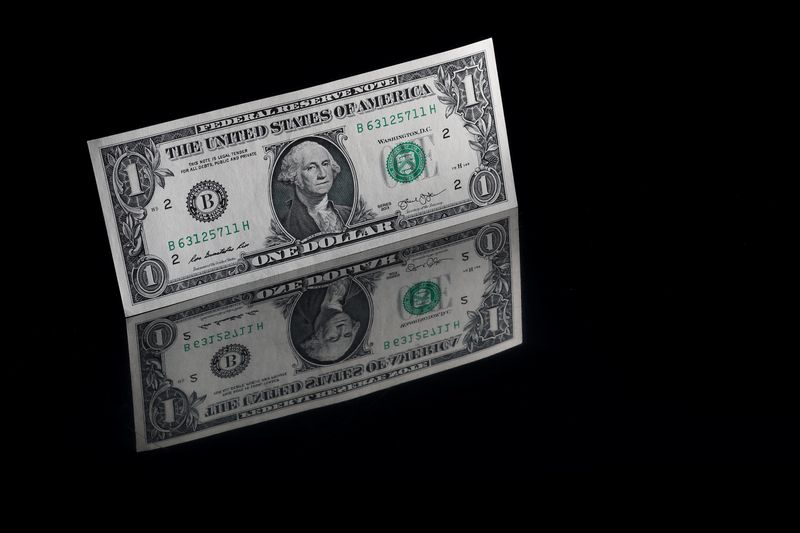LONDON (Reuters) -A key money market indicator is now pricing U.S. interest rates peaking at a higher level than previously forecast, as traders bet that the Federal Reserve will prioritise stamping out inflation over fretting about risks to economic growth.
As war in Ukraine sparks renewed commodity price surges and threatens more supply chain disruptions, a rethink is underway on how fast the Fed will raise rates, given that inflation is at a 40-year high near 8% and rising.
A quarter-point increase is seen as a done deal at the Fed's Wednesday meeting, with another six or seven moves expected this year. Traders are also re-assessing the "terminal" rate - the point were the federal funds rate will peak.
Currently, the expectation is for the terminal rate to be hit in the second half of 2023, and on Monday, the implied yield - essentially a proxy for the fed funds rate - on September 2023 Eurodollar contracts rose to 2.57%. That is up 57 basis points in a week, and up 100 bps this year.
The fed funds range is currently 0-0.25%.
This means traders now anticipate a terminal rate of around 2.50%. For most of this year, the Eurodollar market indicated a terminal rate closer to 2%.
The new pricing gels with the 2.5% median forecast of Fed policymakers.
Goldman Sachs (NYSE:GS) economist Sven Jari Stehn said his bank's analysis indicates a terminal rate of 2.75%-3%. "When we think of the post-COVID world, with tight labour markets, elevated inflation and green investment, all that should support higher rates," Stehn said.
Eurodollar futures not only suggest a higher peak but also imply rates will stay higher for longer. Readings are distorted by thinner liquidity further down the curve, but current pricing shows rates staying above 2% for the next decade .

The risk, however, is that too-aggressive a tightening could be a mistake that chokes the economy and heralds recession, particularly at a time of high energy prices.
"One thing is clear - the Fed's guidance will change from hawkish to dovish at some point," Citi analysts told clients. "There is uncertainty around when the Fed will have to engage in easing but this cycle will very likely be shorter than previous cycles."